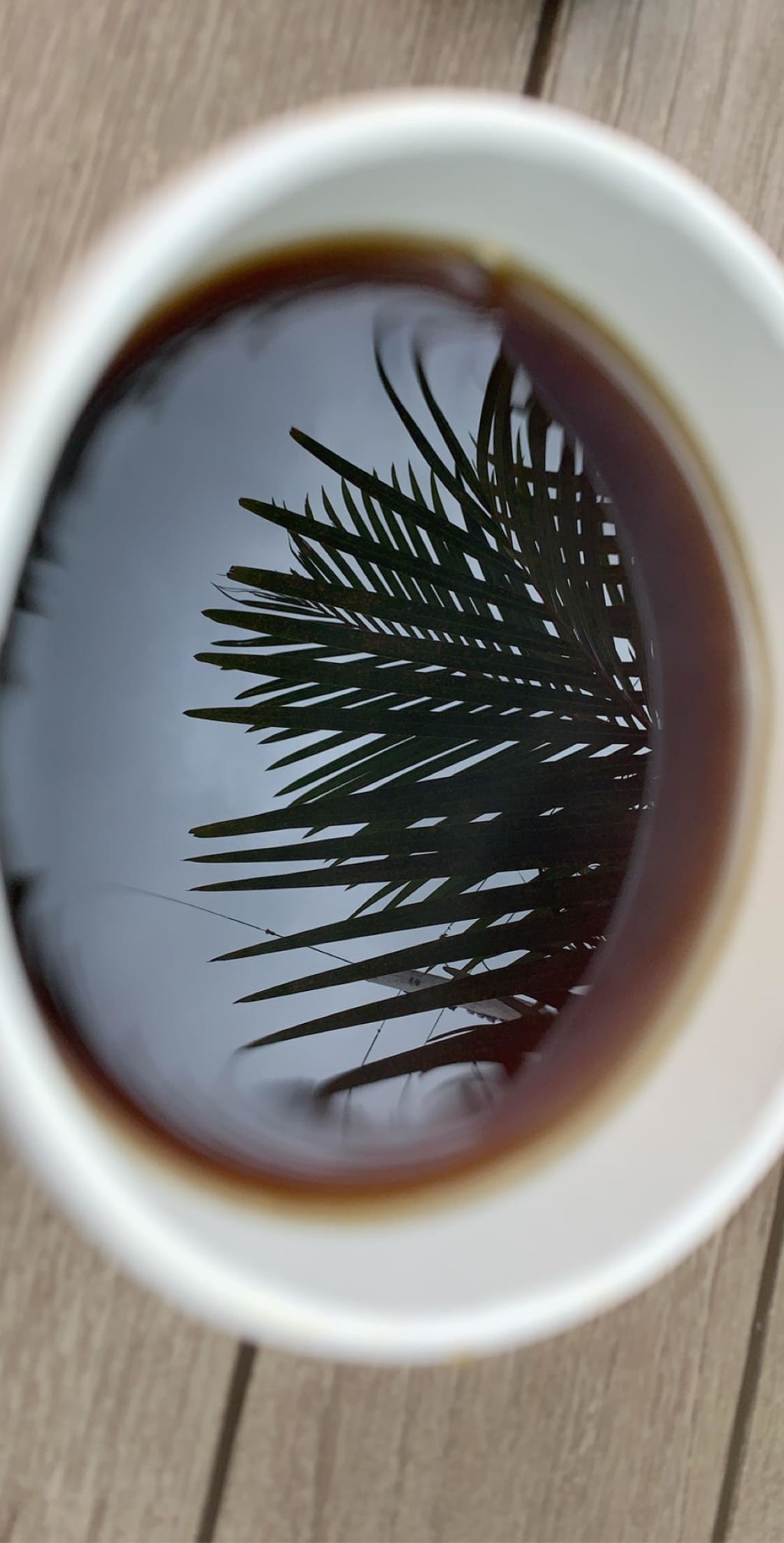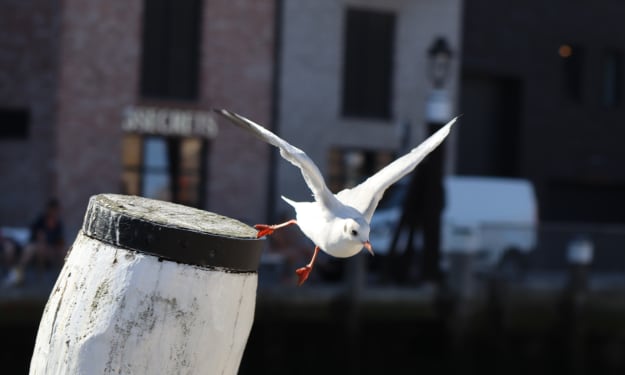Nouveau Edit: The Wisdom of a Novice
“In the beginner’s mind there are many possibilities, but in the expert’s there are few.” - Shunryū Suzuki

It has been said that the most important tool that the armies of old could have at their disposal was not the quality of their officers, not supply lines, nor weapons; this conduit that connects victory and vision, this necessity possessed in spirit by the god of war, Ares, this grossly underestimated and yet so immensely impactful bludgeon of success against foe or enemy of an enemy of an enemy alike, is boots.
The army is akin to an organism in that its needs of survival must be met, fed as often and with as much precision as is necessary to keep it functioning. For a body of individuals called to do one thing more than any other, with that thing being to march, the boot served a purpose not dissimilar in significance to olive oil in ancient Athens or even to electricity in modern times. Without the boot, and specifically one of the highest quality, there could be no reliability of movement or realization of goals. The army with the better boots, those saintly cocoons of the foot serving so often as the reason for verbal curse or blessing of the soldiers of times past, was often able to attribute their triumph, in part, to the stability that their footwear offered. Should they be less likely to break apart, these aforementioned boots might often have been worth their weight in rubies during a crucial offensive or retreat. This technology so inherent in the military craft, and the target of an arms race that was present long before those of modern times, decided the fate of empires, religions, and ideologies that would affect the world over.
The photographer, and the artist as a whole, must also rely on the tools that serve their purpose and that are often the lifeblood of the creative pursuit. In order to describe my editing process, and yes, I do style myself as a photographer as well as a writer, it is important for me to describe the origin of my style of picture. This mentioned origin is to me as the boot, that accoutrement of war, was to the armies of centuries past. There can be no photograph, that immortalized piece of time captured so crudely or masterfully in the lens of the camera, without that which is photographed. My tool that serves both pleasure and successes, one also illustrating some of the greatest heights of experience that I have been able to appreciate day in and day out, is coffee.
My picture of choice, deriving from that which also delighted the royalty of Europe and that now unifies both class and tastebud, is coffee. Unlike my proclivity for run-on sentences, this drink’s sip is fully experienced in short but is never sweet.
It must be stressed that, for me, the photo editing process encapsulates and is even made up of the photo taking process. Several factors are at play in my editing and it is split into parts, at least in the depths of my mind, the shallowness or deepness of which I will leave to your judgement, and is not too different from the stage performer’s cosmetic appliances before the assuming of the spotlight.
My editing process starts before I even take my picture. Like some photographers, though unlike many, I start by crafting my picture in detail. This is as opposed to the method of capturing that which is the greatest creator, nature, and that carves the greatest beauty with much more precision than I.
The coffee that I capture must be dark in color and clearly rich in its taste. To me, it seems almost criminal to drink or take the picture of coffee that is sub-par in strength. Therefore, I allow the water and coffee grinds to sit among each other in a battle that each of them as well as I may claim victory in. If the coffee is not black as the lightless night, as is the case when the moon is given a break behind the heaven’s curtain, then I will not take the picture. Should this happen, I will add more ground-up, premier, coffee, at the expense of my wallet and to the delight of my tastebuds. Some prefer to buy video games. I prefer coffee. Suffice it to say, my picture, as high or low in quality as my abilities can speak for, must be of strong coffee.
Once I have the coffee, I pour it in a cup. If the surroundings are particularly beautiful, or if I have no choice, I will sometimes make use of a paper cup. In most situations of this sort, you must assume that I have accepted a strong coffee at a cafe and am not at home. If I am at home, my picture, or more likely my unnecessary and supposedly artistic preference, mandates that I pour my beverage into a cup that contains a design of some sort. This enhances the photo as well as my experience, which I’m sure you have deduced is mostly one and the same.
A helpful suggestion that I would recommend is the embrace of stillness. Waiting for this aids in the environmental editing process. I refer to my method of editing that is an integral part of setting up, a pre-edit of sorts that encompasses a more mindful approach that grants the photographer control over the captured image. For me, this has to do with my efforts, often in the extreme, to have my circumstances adhere to certain rules. The strength of my coffee, often the very type of single origin bean, the receptacle, and the stillness of the liquid so as to grant a clear imaged reflection, among other factors. The patience inherent in any wait, let alone one in gentle pursuit of stillness, whether over the motioned or stationary image, can also be aided through mindful breathing. This also displays heightened control over one’s environment, just in a different way. Even those in cultures the world over that trained for excellence in the bow and arrow, that art of the ancients often enjoyed for its peaceful applications of showcasing skill in the extreme, included breathing techniques in their efforts. The photographer would do well to employ this technique, one simply pertaining to the focusing on one’s own breathing, in their own pursuit for accuracy.
A large part of my pictures rely on the reflections that the coffee’s environment reflects onto it, the appearance of which is entirely dependent on the angle of my position. My pre-editing therefore involves a space that allows for beauty to be shown on the face of this cup and this fountain of the coffee bean.
Finally, as an amateur photographer, though we surely can have a heated conversation as to whether the artist can truly be a novice, I make use of that which is known as the snapchat filter. After taking the photograph, I have at my disposal a treasure chest of lighting, verbal, and location options that delight the socially conscious throughout our world.
Once I’ve captured a photo on a phone, that wand available at the fingertips of the masses, I am almost complete. I either make use of the aforementioned filters, or go about the task of deciding that my labors are done. If I do not feel the harmony, the ease known to the proud artist, I start anew.
End.
As much of my editing process lies in the creation of the pictures’ environments themselves, you see below an example of a before picture that illustrates this process. This picture is one where the coffee is blurry and not entirely still, therefore taking away from the clarity-of-reflection that I wished to illustrate. The following two pictures are not merely an example of a before picture compared to an after, but rather are showing an environment that is unedited compared to one that is!

After:

This pair of before and after photos also showcase the editing that happens after my pictures are taken. In the picture following the one immediately below, you can see that I made use of the filter that allowed me to display my location as part of the piece.

After:

A few other pictures:

The latte, a rare specimen. It possesses a consistency that makes up for coffee dilution.









Comments
There are no comments for this story
Be the first to respond and start the conversation.